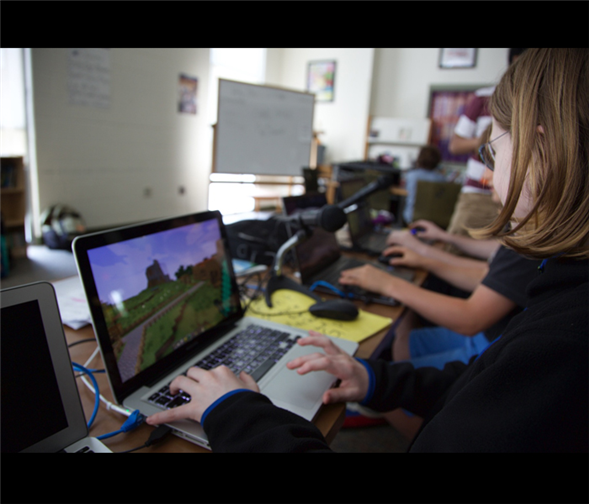Translate Page

How local drama teachers use technology in their classrooms
---
As an arts journalist and K-12 curriculum writer, I constantly find myself wondering how the theatre can (and should) intersect with the rest of a student's schedule. That's why I'm drawn to STEAM.
STEAM is an education initiative that integrates disciplines: science, technology, engineering, the arts, and math. Advocates like Georgette Yakman, who pioneered STEAM instruction in 2007 and founded the consultancy STEAM Education, say this combined approach increases engagement and helps students make connections between subjects.
The drama critic in me wondered what STEAM might look like in a theatre class, so I asked Yakman. She told me about students at an elementary school in Georgia who created a musical last year about the differing experiences between kids who go to a STEAM school and kids who don't. The kids rewrote popular songs to cover all the STEAM subject areas. "Funkytown" became "Technotown"; "Sexy and I Know It" became "We're Mathematicians and We Know It."
Okay, so students can make theatre about STEAM. But what about using STEAM to make theatre?
That question is right up Eddie Kim's virtual alley. Kim is the head of the Theater Program at the Pierrepont School, a private K-12 institution in Connecticut. In addition to traditional theatre classes, he teaches "video game puppetry," in which students take classic works and retell them through video games.
A familiar literary text – like Romeo and Juliet or "The Tell-Tale Heart," to cite two recent choices – provides the basis for the classroom's script, while games like World of Warcraft supply the setting and characters. At a performance, audience members watch the story enacted on a projection screen. In front of the screen, the student-performers sit at computers, controlling the computerized characters and speaking their words.
{Image1}
The combination of classic narratives and video games can hook young people otherwise uninterested in theatre. Kim recalls a performance his students gave at a public high school in New Haven about three years ago. "We're sitting there, and these kids are on their phones—they're almost heckling us. [But then] we start telling this story from Ovid using [the popular video game] Halo: Reach. By the end of it, every student was completely silent."
One reason for the silence was the digital technology. "Through the medium, these kids who were watching us really engaged with the story," Kim says.
He has noticed this reaction during other performances of video game puppetry. "They know these games, and just knowing the games and watching what we do, we often get kids who go, 'Why don't you use this game?' or 'Why don't you use this for that moment?'" The technology gives students a way into the classics and also a way into the performance aspect of the texts, he says.
Under other circumstances, though, technology can get in the way. Such is the observation of Karen Sklaire, a drama teacher at P.S. 2, a K-5 school in New York City.
As Sklaire sees kids increasingly connected to their devices, she sees "a huge disconnect" in them from each other and from their imaginations. "They can't tell a story unless it's from a video game," she laments. Her goal as a drama teacher is to change that by teaching self-expression and social skills.
{Image2}
"I'm not anti-technology," Sklaire emphasizes, "But I'm more into in doing instead of seeing. Kids learning things on computers are not going to retain them as [well as] if they learn them physically." Psychological research on taking notes with laptops versus longhand backs her up.
Still, Sklaire recognizes the value of technology as a tool for teaching theatre, provided the right things are used in the right way. Example? A performance undertaken by her students with the assistance of C&T, a UK-based company that plugs digital technology into drama and education. Through the augmented reality platform Aurasma, her students created "a whole digital story" from tableaux, expressing themselves with just their bodies. Aurasma recorded their poses and let the students watch what they had created. "It was a different way of looking at acting," Sklaire says.
Likewise, STEAM offers drama teachers like Sklaire a different way of looking at theatre. But whether students are staging musicals with songs about math or speaking the words of Niobe after her children are slaughtered in an Xbox game, they're performing stories. Isn't that the essence of theatre, whatever form – or platform – it inhabits?
---
Dan Stahl is a reporter and K-12 curriculum writer based in New York City.
Photos courtesy of Eddie Kim/EK Projects. Top photo: One of Kim's students incorporates video games into a theatre project.